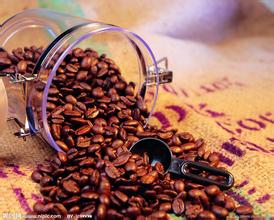Light and pure flavor and pleasant aroma characteristics of Costa Rican Saint Roman Manor Coffee
Costa Rica occupies only 0.03% of the world's land area, but it is home to nearly 4% of the world's species, making it one of the most biologically diverse countries in the world. 26 per cent of the country is designated as national parks or nature reserves, including 11 wetlands, 2 biological reserves and 3 World Heritage sites. Forest cover is 52 per cent of the country.
Natural resources include iron, manganese, mercury, bauxite, gold and silver, among which bauxite, iron and coal reserves amount to 150 million tons, 400 million tons and 50 million tons respectively. Recent developments are mainly distributed in the central golden belt region of the Tilaran Cordillera in the northwest. Calcium carbonate ore is distributed in the northwest and has a higher grade. The purity of calcium carbonate extracted from limestone can reach 99.5%. Costa Rica attaches great importance to environmental protection and the exploitation of natural resources is severely restricted.
Oil is completely imported, mainly from Colombia and other countries, monopolized by RECOPE, with an average annual import of 3 million tons of crude oil. Since 2012, the National Oil Company has suspended crude oil refining production due to aging facilities, and fuel oil has been imported entirely. In 2013, Costa Rica imported 19.3 million barrels of oil, amounting to 2.3 billion US dollars, accounting for 5.5% of GDP. Costa Rica has 21 ministries, namely: Ministry of Foreign Affairs and Worship, Ministry of the Presidency, Ministry of Interior, Police and Public Security; Ministry of Finance, Ministry of Foreign Trade, Ministry of Economy, Industry and Commerce; Ministry of Planning and Economic Policy; Ministry of Health; Ministry of Science and Technology; Ministry of Decentralization and Local Development; Ministry of Social Welfare and Family; Ministry of Public Works and Transport; Ministry of Public Education; Ministry of Housing and Settlement; Ministry of Environment and Energy; Ministry of Labour and social protection; Ministry of Culture and Youth; Ministry of Agriculture and Livestock; Ministry of Justice and Peace; Ministry of Sports; Ministry of Tourism. [5]
cabinet
President: Head of state and head of government, elected by universal suffrage for a term of four years, non-renewable, renewable. Luis Guillermo Solis of the Civic Action Party won the second round of elections on April 6, 2014 with 77.8% of the vote and was sworn in as the 16th President of the Second Republic on May 8, 2014, serving until May 2018. [5]
Cabinet: 2 Vice-Presidents and 21 Ministers, the Vice-President elected in the presidential election, Ministers appointed by the President. In the absence of the president, the first and second vice presidents and the speaker of the parliament take over once. In Solis 'cabinet, First Vice President and Finance Minister Elio, Second Vice President Anna Elena Chacon, Foreign Trade Minister Alexander, Economy, Industry and Commerce Minister Wilmo Ramos, Planning and Economic Policy Minister Olga Marta Sanchez, Public Works and Transportation Minister Ross Segnini, Central Bank Governor Oliver, National Electricity and Telecommunications Company President Carlos Manuel
One of the most famous is Mountain Costa Coffee, which tastes mellow and neutral. It can be boiled directly or mixed with other kinds of coffee beans. It is also a good choice.
Other types of Brazilian coffee, such as Rio, Parana, etc., can be produced in large quantities without too much care. Although the taste is rough, it is a kind of inexpensive coffee. Due to its distribution in all parts of the country, the solid quality varies, and there are its own standards (NO.2~NO.8 according to the number of impurities, NO.13~NO.19 according to the size of beans, divided into six grades according to taste). Almost all Arabica varieties are of good quality and stable prices, the most famous being Costa Rica, which has been a necessity for blended coffee since ancient times and is familiar to the public.
Excellent Costa Rican coffee is known as "extra hard beans" and can grow at altitudes above 1500 meters. Altitude has always been a problem for coffee growers. The higher the altitude, the better the beans, not only because higher altitudes increase the acidity of the beans and thus enhance the flavor, but also because the lower night temperatures at higher altitudes can slow down the growth of trees and thus enhance the flavor of the beans. In addition, due to the high altitude drop caused by sufficient rainfall, coffee tree growth is very favorable. The negative effect, however, is to increase the additional cost of transportation, which may well make coffee production unprofitable. Costa Rica's coffee has adopted new techniques to increase efficiency, including using "electric eyes" to select beans and identify beans of irregular size. Tarrazu, Costa Rica, is one of the world's leading coffee producers, producing coffee with a light, pure flavor and pleasant aroma. Costa Rica's volcanic soils are fertile and well drained, making it the first country in Central America to grow coffee and bananas for commercial value. Coffee and bananas are the country's main exports. Coffee was introduced to Costa Rica from Cuba in 1729, and today its coffee industry is one of the most well-organized in the world, producing up to 1700 kilograms per hectare. Costa Rica has a population of 3.5 million, but coffee trees number 400 million, and coffee exports account for 25% of the country's total exports. Costa Rica also benefits from the Turrialba of the Central American Agricultural Research Institute (IAAC) in Tarazu, an important international research centre.
High-quality Costa Rican coffee is known as "extra-hard" and can be grown at altitudes above 1500 meters. Altitude has always been a problem for coffee growers. Coffee beans are better at higher altitudes, not only because higher altitudes increase the acidity of coffee beans and thus enhance flavor, but also because lower night temperatures at higher altitudes cause trees to grow slowly, thus making coffee beans more flavorful. In addition, due to the high altitude drop caused by sufficient rainfall, the growth of coffee trees is also very favorable. However, while there are many advantages to growing coffee at higher altitudes, the additional transportation costs associated with it must be taken into account, which may well make coffee production unprofitable. Costa Rican coffee has adopted new techniques to increase efficiency, including the use of "electric eyes" to select beans and identify beans of irregular size

Important Notice :
前街咖啡 FrontStreet Coffee has moved to new addredd:
FrontStreet Coffee Address: 315,Donghua East Road,GuangZhou
Tel:020 38364473
- Prev

Introduction to the fragrant, pure and slightly sour Salvadoran Himalayan coffee flavor manor
The national emblem of El Salvador was used on September 15, 1912. The national emblem of El Salvador is an equilateral triangle whose three yellow lines represent equality, truth and justice respectively. Five volcanoes rise between the Pacific Ocean and the Atlantic Ocean, symbolizing the five countries in Central America. The pole of freedom and the red cap of freedom stand high on the top of the mountain, radiating the light of freedom and liberation.
- Next

Introduction to the elegant fragrance of Antigua Coffee Manor in Guatemala
Guatemala is located in the tropics, the northern and eastern coastal plains have a tropical rain forest climate, the southern mountains have a subtropical climate, the year is divided into two dry and wet seasons, with the wet season from May to October and the dry season from November to April of the following year. The narrow and fertile flatlands on the Pacific side of Guatemala have a tropical climate. The central plateau is also the cultural center of Guatemala, where the year-round temperature ranges from 1300 to 1800 meters.
Related
- Detailed explanation of Jadeite planting Land in Panamanian Jadeite Manor introduction to the grading system of Jadeite competitive bidding, Red bid, Green bid and Rose Summer
- Story of Coffee planting in Brenka region of Costa Rica Stonehenge Manor anaerobic heavy honey treatment of flavor mouth
- What's on the barrel of Blue Mountain Coffee beans?
- Can American coffee also pull flowers? How to use hot American style to pull out a good-looking pattern?
- Can you make a cold extract with coffee beans? What is the right proportion for cold-extracted coffee formula?
- Indonesian PWN Gold Mandrine Coffee Origin Features Flavor How to Chong? Mandolin coffee is American.
- A brief introduction to the flavor characteristics of Brazilian yellow bourbon coffee beans
- What is the effect of different water quality on the flavor of cold-extracted coffee? What kind of water is best for brewing coffee?
- Why do you think of Rose Summer whenever you mention Panamanian coffee?
- Introduction to the characteristics of authentic blue mountain coffee bean producing areas? What is the CIB Coffee Authority in Jamaica?

